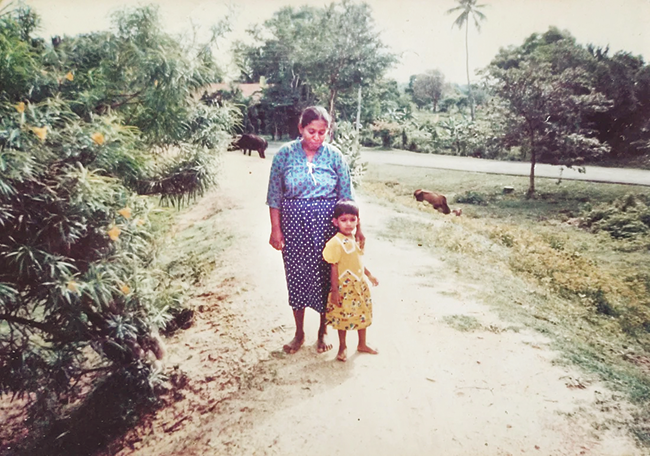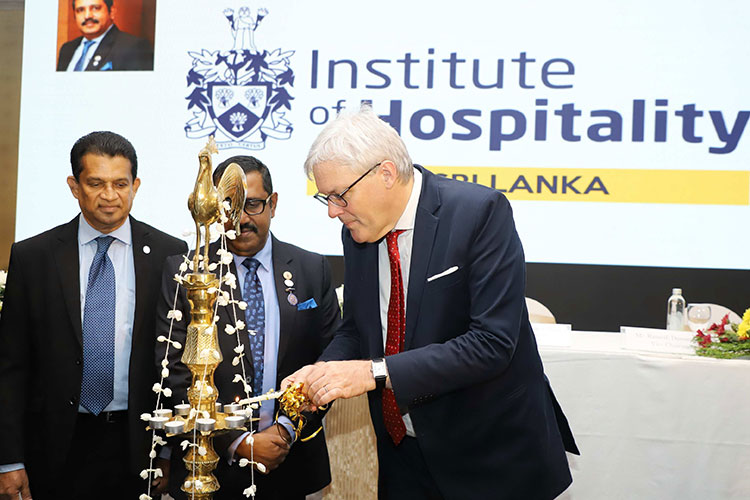Life style
My home is the taste of eggplant
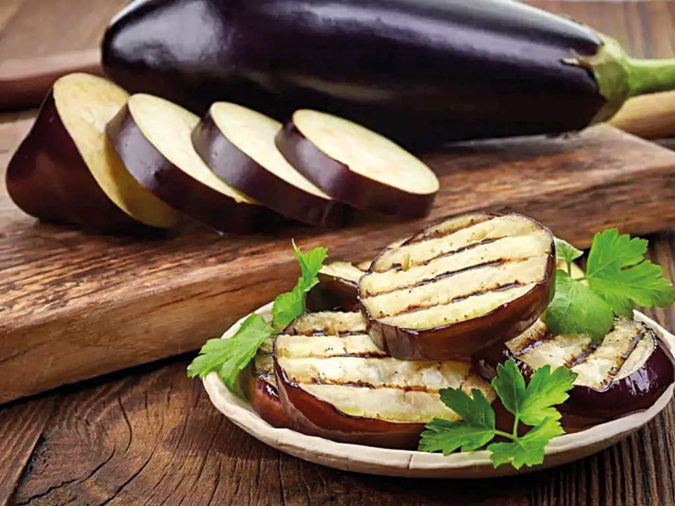
Growing up in Sri Lanka, my childhood was rich with home cooked eggplant dishes — despite my dad’s warnings
Zinara Rathnayake
I cannot remember when I first tasted eggplant, but I was at home. Where I grew up. Our house sat in one corner of a two-acre paddy field in the teardrop island, Sri Lanka. I was in kindergarten, or maybe even younger. My mother made sure I grew up with the flavours of wambatu. This is the name for eggplant, aubergine or brinjal in native Sinhalese – wambatu.
In ayurveda, purple eggplant is considered a “heaty food” — my father, always reading, would advise us against eating it too often. “You’ll get a headache,” he will say one day. “Your legs and hands will ache,” he will tell us another day. Now at 24, I realize my father may have been right all along. Nightshades such as eggplants do seem to trigger my frequent migraines.
But it was too late. I will always love wambatu now.
Growing up in our little home, my mother would cook me her tempered eggplant dish two or three times a week. We had two kitchens at home. One was the usual indoor kitchen. The other was an open kitchen space with an earthen fire. This was the norm in Sri Lankan homes. The modern indoor kitchen is for light cooking. The earthen fire is for “serious” cooking.
Inside, there was a kerosene stove. “It cooks food faster,” my mother would say. She juggled two jobs — teacher and housewife. Once she washed and removed the stems, she would cut each eggplant into thin slices. She would carefully check for any rotten part, or sometimes for worms. If your eggplant has tiny holes inside, it’s a telltale sign of pests. In the early 2000s, most vegetables we bought home were organically grown. There was always a chance to find a tiny worm or a black, rotten part in our eggplants.
“These are the best eggplants,” my mother would say as the younger me watched her with disgust as she removed the inedible parts. “You know you aren’t eating poison. They don’t have chemical pesticides.”
In mornings before school, she would use an aluminum cooking pot. She would pour a little coconut oil. How many spoons? Two or three? There was no measuring scale. “The right amount, so it tastes right,” she would tell me. The same words her mother, my grandmother told her. Homemade coconut oil slowly would heat on the kerosene fire, and the rich aroma would fill the space within the four walls of our kitchen.
Curry leaves, sliced onions, chopped garlic and finely cut red chili would cook for three to five minutes. When the onions turned translucent, she would add the sliced eggplant into it, followed by a few tablespoons of red chili powder, roasted curry powder, turmeric powder, and sea salt. It’s cooked until the eggplants turn slightly mushy.
The creamy lentils curry and spicy sambal paired perfectly with my mother’s slightly-mushy, tempered eggplant. It was a divided labor of love. It tastes like home.
Served warm, I would devour this eggplant with white or red rice, a creamy parippu (lentils) curry, and pol sambal. Lentils are cooked in thick, creamy, homemade coconut milk with Lankan spices. Pol sambal is a spicy condiment prepared with freshly, scraped coconut. Every morning, my father would scrape half a coconut. He would then add the grated coconut flesh, dried red chili, and sliced onions into a chalice-shaped mortar. He would use a pestle to finely crush all the ingredients, and season it with lime before it went into our plates.
Tempered eggplants are muddy-green in colour. Before cooking, nature marks the raw eggplants with white and purple stripes. These are graffiti eggplants. They grow in abundance in the dry parts of Sri Lanka. Every Sunday, I would go to the weekly fair with my mother. It was a produce market where men and women came to sell and buy local produce. We’d buy two kilos of graffiti eggplants every week, just for me and my mother.
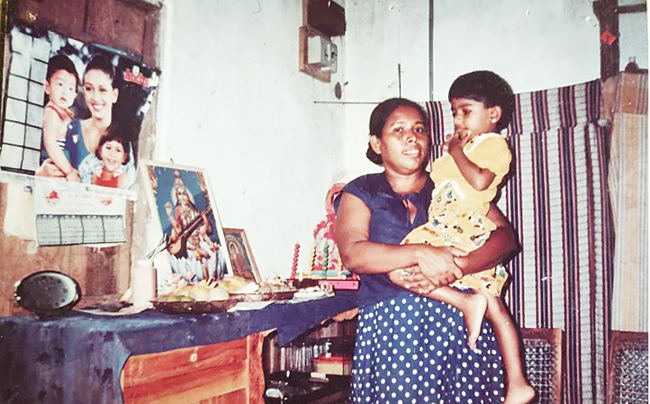
On the day of my ‘akuru kiyaweema’ — a customary event of reading the first letters to a child at an auspicious time in Sri Lanka.
Some days in the evenings, I would sit on the green grass by the small bamboo gate at home. Every evening, a middle-aged man rode his bread truck along the dusty narrow lane in front of our house. He went through the paddy fields into the village beyond visible sight. We called him Choon Paan Uncle. Choon is a Sinhalese term which indicates fun and happiness — something like good vibes. Paan is the Sinhalese name for bread.
The truck was Choon because he played music. It was a distinctive sound unique to Choon Paan trucks around the island. When I would hear the first sound of Choon Paan Uncle, I’d call my mum and we’d buy a loaf of bread from the truck, fresh off the oven. During dinner, I’d eat two slices of bread with my mother’s tempered eggplant dish.
The American eggplant is meatier inside. They grow in farmlands in Sri Lanka’s hill country, particularly in the tea town Nuwara Eliya. The sight of small makeshift stalls piled with stacks of glorious, dark-purple eggplant fills my heart with joy. It was only during school holidays that we’d road-trip in a small minibus to the up country. We’d come back home with several kilos of eggplants and a potted, mountain-grown gerbera plant. A week later, the gerbera plant was usually dead, but our stomachs (full with delicious eggplants) are happy. Our hearts were even happier.
My mother also made a creamy curry with eggplants. She would first deep fry sliced eggplants. Once the excess oil is removed, she would make it into a curry. The crunchy pieces were cooked in thick coconut milk and seasoned with Indian Ocean spices.
There’s another eggplant dish I remember well. Wambatu moju is a celebration. It’s a delightful pickle that’s only prepared during special occasions. It has often been a centerpiece of the lunch table at home weddings, birthdays, and Sri Lankan New Year celebrations. It’s mostly served with yellow ghee rice.
To make it: eggplants are sliced. The meaty slices are fried until they turn golden brown in colour. You then fry your green chillies and shallots. These coconut-oil fried ingredients are marinated with mustard paste, ginger-garlic paste, chili flakes, salt, sugar, and vinegar. At home, we prepare the pastes ourselves on a grinding stone by hand. The preparation lasts for hours.
With layers and layers of taste, the eggplant pickle is quintessentially Sri Lankan. It tickles your taste buds. Chilli adds a punchy note. The tangy vinegar pairs well with sugar and salt, and balances the bitterness of the crushed mustards. It’s every wonderful flavour in one single bite.
Back then, in our tiny house by the paddy fields, my father worked his spare time in the garden. Our lawn was where bananas, pineapples, coconuts, and some vegetables were grown seasonally. There was also Thai eggplant and pea eggplant. Green in colour, they both look and taste different from their purple-coloured sisters. My father excelled at his elabatu (Thai eggplant) curry. He added dried tamarind from our next-door neighbor to our tiny Thai eggplants, cut in half and de-seeded.
Pea eggplants or thibbatu are even smaller. They are tiny, perfectly round balls. They are also named Turkey berries. When tempered, the clusters of berries taste wonderful. Since they are incredibly small, my father didn’t bother to remove the bitter seeds. But it was the kind of bitter you’d slowly fall in love with. I hated it at first, but with time, I slowly begin to like it. Before I knew it, I would ask my father for bitter-tasting, stir-fried pea eggplants every dinner.
As I grew up, I began loving my father’s Ayurvedic cooking. He frequented the outdoor kitchen, where he prepared tempered pea eggplants on an earthen fire inside a clay pot and turned seedless Thai eggplant into the sour, creamy curries I devoured. “There’s nothing heaty about them,” he would tell me with a smile.
In Colombo, I eat chemically-treated veggies and fruits from the supermarket, and I lunch in small eateries where curries taste nothing like love.
When I turned 10, we left for my school in Kandy. We stayed in a mountain house in the chaotic city. Our Kandy house only had one kitchen. It was where we were first exposed to chemically-treated veggies. My mother didn’t have to double-check for worms or rotten parts in her bulb-shaped, dark purple eggplants anymore.
My parents relocated to their tiny house by the paddy fields. Often, I head back home for my mother’s tempered eggplant. It sometimes triggers a migraine, but I cannot resist the taste. My father is retired now. He works in the garden and cooks on the earthen fire, making me his curries with glorious green eggplants. (BBC)
Life style
Camaraderie,reflection and achievements

Institute of Hospitality Sri Lanka
 The 32nd Annual General Meeting (AGM) of the UK-based Institute of Hospitality’s Sri Lanka Chapter was held recently at the Ramada Hotel Colombo,.The event provided an evening of camaraderie , reflection of the past and present achievements,setting new benchmarks for the future
The 32nd Annual General Meeting (AGM) of the UK-based Institute of Hospitality’s Sri Lanka Chapter was held recently at the Ramada Hotel Colombo,.The event provided an evening of camaraderie , reflection of the past and present achievements,setting new benchmarks for the future
The AGM had the presence of two distinguished guests, the Chief Guest Opposition Leader Sajith Premadasa, and the Guest of Honour British High Commissioner to Sri Lanka, Andrew Patrick. Their inspiring speeches were lauded by all hoteliers who were present at the occasion
A special thanks was extended to Robert Richardson, CEO of the Institute of Hospitality UK, along with his team, sponsors, committee members, and all attendees for making the event memorable.
Dr. Harsha Jayasingh, Past President of the Institute of Hospitality (UK) Sri Lanka Chapter, emphasised the Institute’s longstanding history and the strength of its Sri Lankan branch. “The Institute of Hospitality (IH) UK has a history of 86 years, and we are proud to be the Sri Lanka Branch. IH Sri Lanka is much stronger now with many members from all areas of the hospitality industry,” he stated.
Dr. Jayasingh highlighted the significant role of tourism in Sri Lanka’s economy,. He said tourism it is the third-largest source of revenue for the country. “Tourism accounts for about 13.3% of total foreign exchange earnings and employs 450,000 people directly and indirectly. The hospitality industry in this island of pearl holds tremendous potential for economic growth, job creations, and cultural exchange,” he added.
He also pointed out more women should be attracted to the industry and advocated for the use of technology in hospitality sector to attract the younger generation.
The newly appointed Chairman Ramesh Dassanayake spoke about the challenges faced by the industry, including the reluctance of youth to join the sector. . Dassanayake expressed concerns over the migration of staff between hotels and the overall ‘brain drain’ in the sector. ” We must maintain high standards in the hotel We must try to attract tourists to Sri Lanka, we must have with many facilities Hence, hotel schools and other professional institutions involved in skills development mustincrease their intakes,” he pointed out.
Chief Guest Sajith Premadasa emphasised the importance of eco tourism and said “We need to have an environmental policy related to tourism in place,” . .
The 32nd AGM of the Institute of Hospitality UK, Sri Lanka Chapter, was a testament to the strength and potential of Sri Lanka’s hospitality industry. The insights and commitments shared during the event set a new benchmark for the future.(ZC)
Pix by Thushara Attapathu
Life style
He recognizes human identity beyond boundaries of gender, race, nationality and religion.
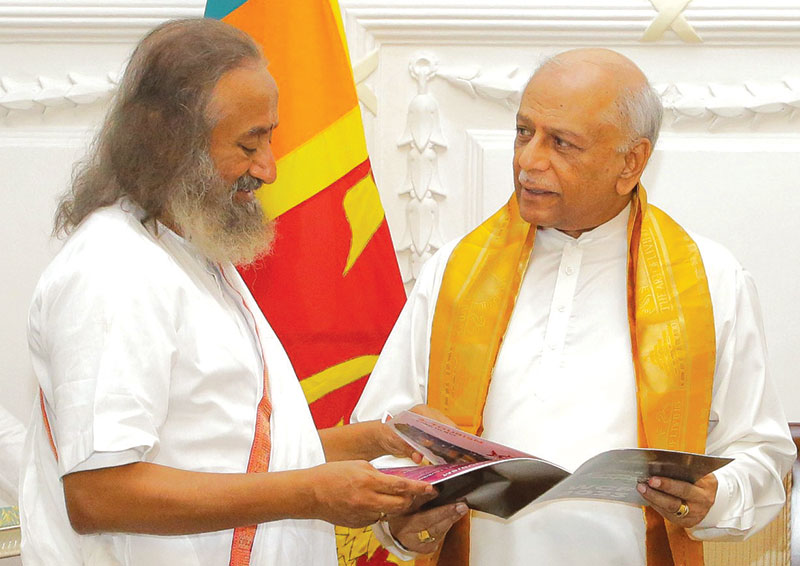
Visit of Sri Gurudev to Sri Lanka
Humanitarian, spiritual leader and Global Ambassador of Peace Gurudev Sri Sri Ravi Shankar (Sri Gurudev) was in Sri Lanka on a three day tour on the invitation of the Prime Minister of Sri Lanka Dinesh Gunewardene. Gurudev who inspired a wave of volunteerism and service to moot one of the largest volunteer-based organisations in the world – The Art of Living – visited the various projects under the aegis of the foundation and launched twelve vocational and technical centers around the island. He was accompanied by thousands of followers from Sri Lanka and around the world.
Gurudev who visited Sri Lanka for the sixth time also had a first day cover launched in honour of his visit. He is a strong proponent of spreading happiness, using the unique Sudarshan Kriya, yoga, meditation and practical wisdom to unite people, empower individuals and transform communities. His programmes provide techniques and tools to live a deeper, more joyous life, while his non-profit organisations recognize the human identity beyond the boundaries of gender, race, nationality and religion.
The Art of Living which has more than 30,000 teachers and over one million volunteers across 180 countries has touched in excess of five hundred million people around the world. CNN called it “Life Changing” and The Washington Post headlined it, “Fresh air to millions”.
In Trincomalee, Gurudev met with war victims and had a heartwarming engagement with the children from the children’s homes run by the Foundation. He also visited the Koneswara Temple in Trincomalee and graced the Kumbhabhishekam at Seetha ecogPnize the human identity beyond the boundaries of gender, race, nationality and religion. Amman temple at Nuwara Eliya. He held discussions with the trustees on the progress of the foundation’s social service projects, while also holding a special event – Ekamuthuwa – attended by a large number of dignitaries and his devotees from around the world.
His time with the Prime Minister was spent discussing the prospects of unity in diversity and uniting Sri Lanka by adding happiness into the formula of living. In addition he had discussions with the Speaker of the Parliament of Sri Lanka Mahinda Yapa Abeywardena, prominent business stewards and civil society leaders.
Life style
Bridal shows with opulence and luxury at The Epitome hotel in Kurunegala
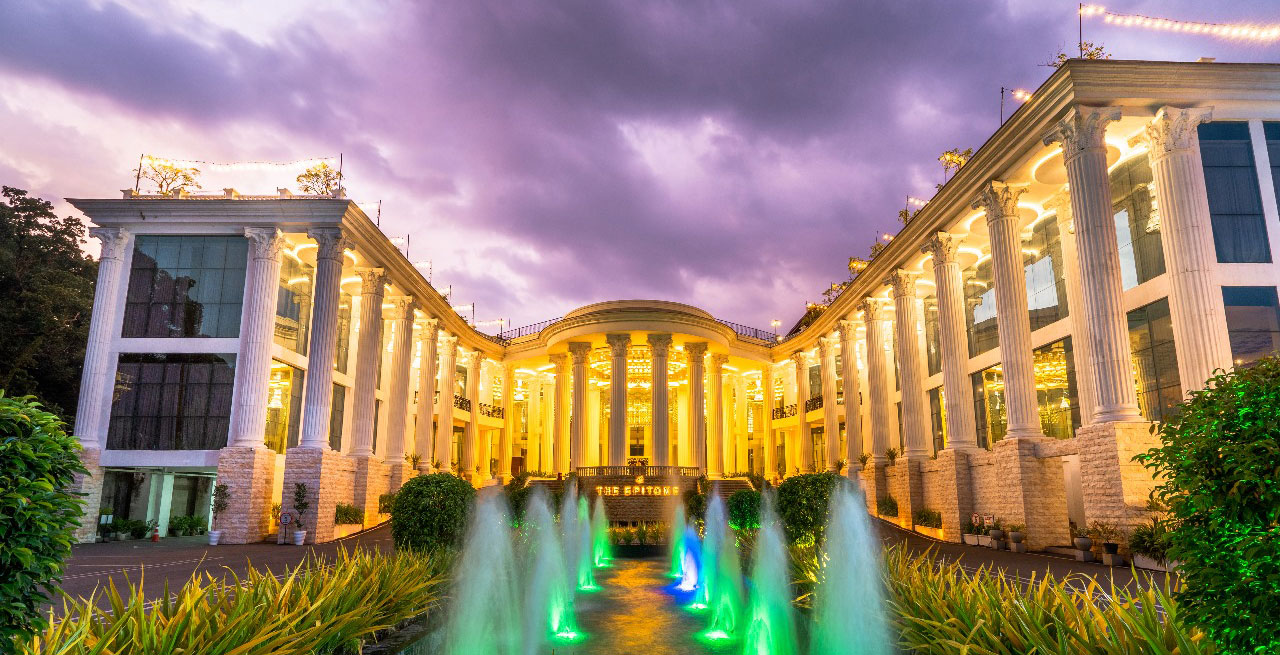
by Zanita Careem
Envison your dream wedding day come to life at the Epitome Hotel, a prestigious city hotel in Kurunegala offering an unrivalled luxury rendors experience for weddings.
The venue is designed to embody opulence and luxury from all quarters for a spectacular wedding in kurunegala,Thier ballroom is the largest banquet facility in Sri Lanka It can be divided into six luxurious pillarless wedding halls on the ground floor and 25pax smaller banquet halls.
It can be easily named as a five star heaven in the heart of the city contributing to a myriad of immense experiences tailored to inspire and delight wedding experiences.
From opulent décor set up to exquisite table decor, lavish food, every detail is meticulously curated to spark your imagination and ignite creativity for a perfect wedding. The previous prestigious wedding shows season one and season two attracted large crowds
were unique events which gave the wedding vendors and potential clients had an opportunity to connect and interact with each other. Beyond being a showcase it was a chance for the wedding vendors to unite and contribute to the vibrancy of the wedding industry. The wedding show covered all area of the bridal industry providing a comprehensive variety of bridal supplies from Sri lanka and became the most popular bridal exhibitions in Kurunegala.This bridal exhibitions allowed brides and grooms to experience first hand the products and services available from suppliers in Sri Lanka
These wedding shows held at The Epitome created a benchmark and gave an opportunity for vendors to create connections to the utmost satisfaction said Harshan Lakshita Executive Director. of the magnificent Hotel
Our wedding shows featured experts and professionals in every field‘ It covered all areas of the bridal industry provided a comprehensive variety of bridal supplies from Sri lanka and became most popular bridal exhibition in this region.We are always open to everyone to join us at our wedding shows in the future. It is an opportunity to discover the incredible talent within our local wedding and bridal vendors to make meaningful relationships and plan thier special day at our breathtaking hotel The Epitome said General Manager Kavinda Caldera
The Epitome Hotel’s bridal show which will be held end of June will buzz with great ideas,advice and inspiration for all those who plan thier dream wedding
…….
The Hotel Epitome’s Wedding Season 3 will marked excellence, celebration and inspiration for those in the wedding industry. The exhibition halls will resonate with ideas on exquisite bridal wear to decor, florists , photography etc and showshowcase the rich tapestry of talent within the local wedding industry. .

